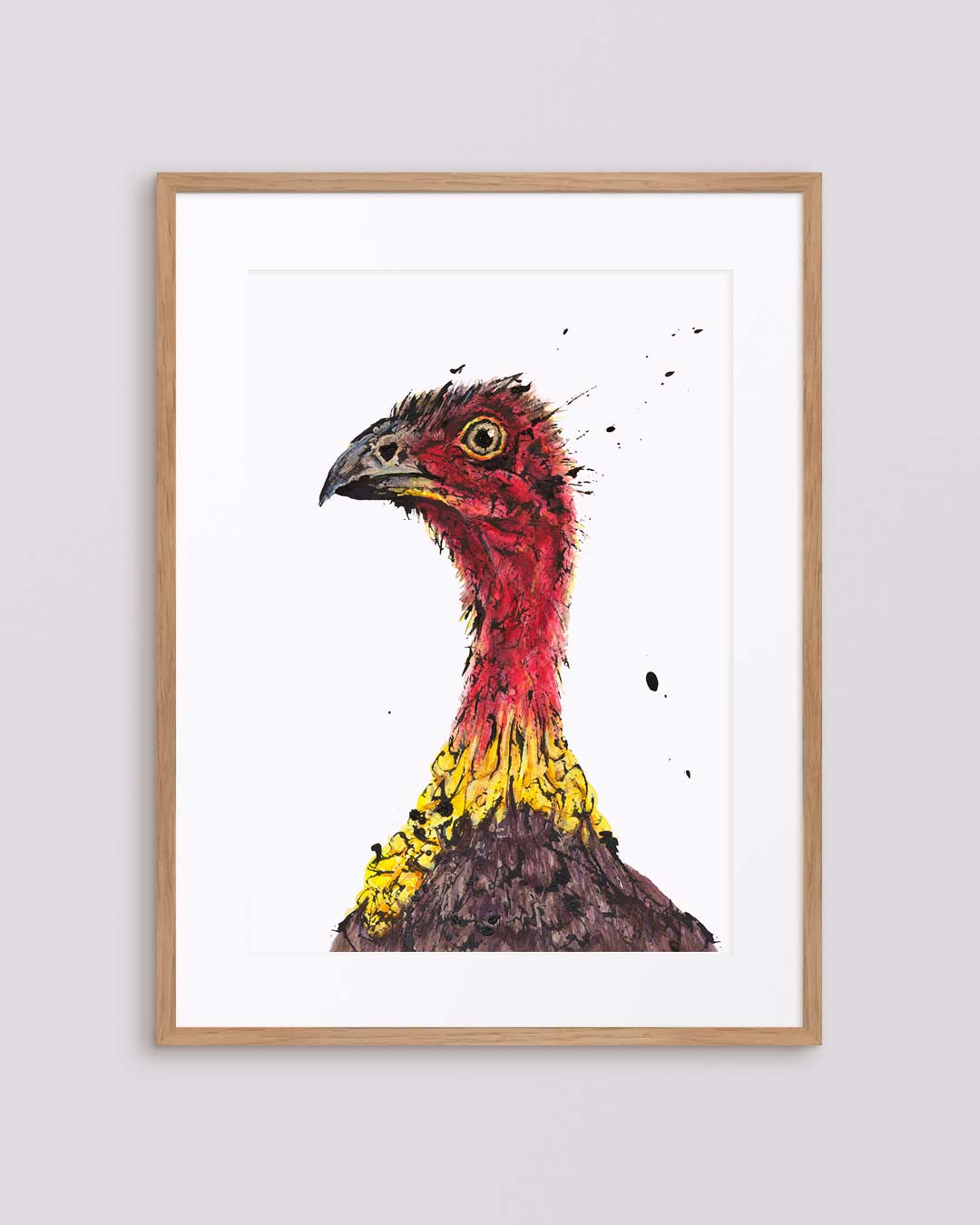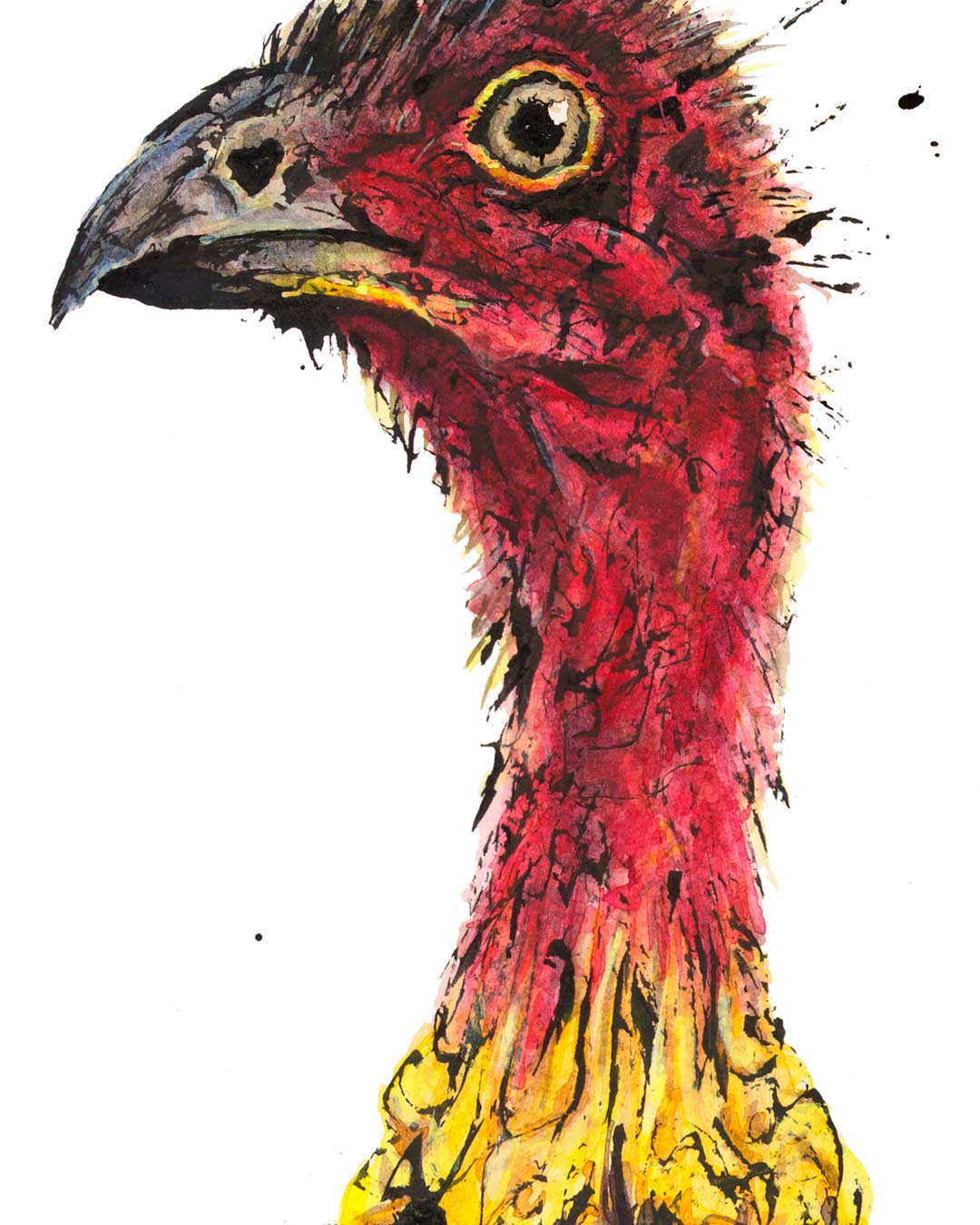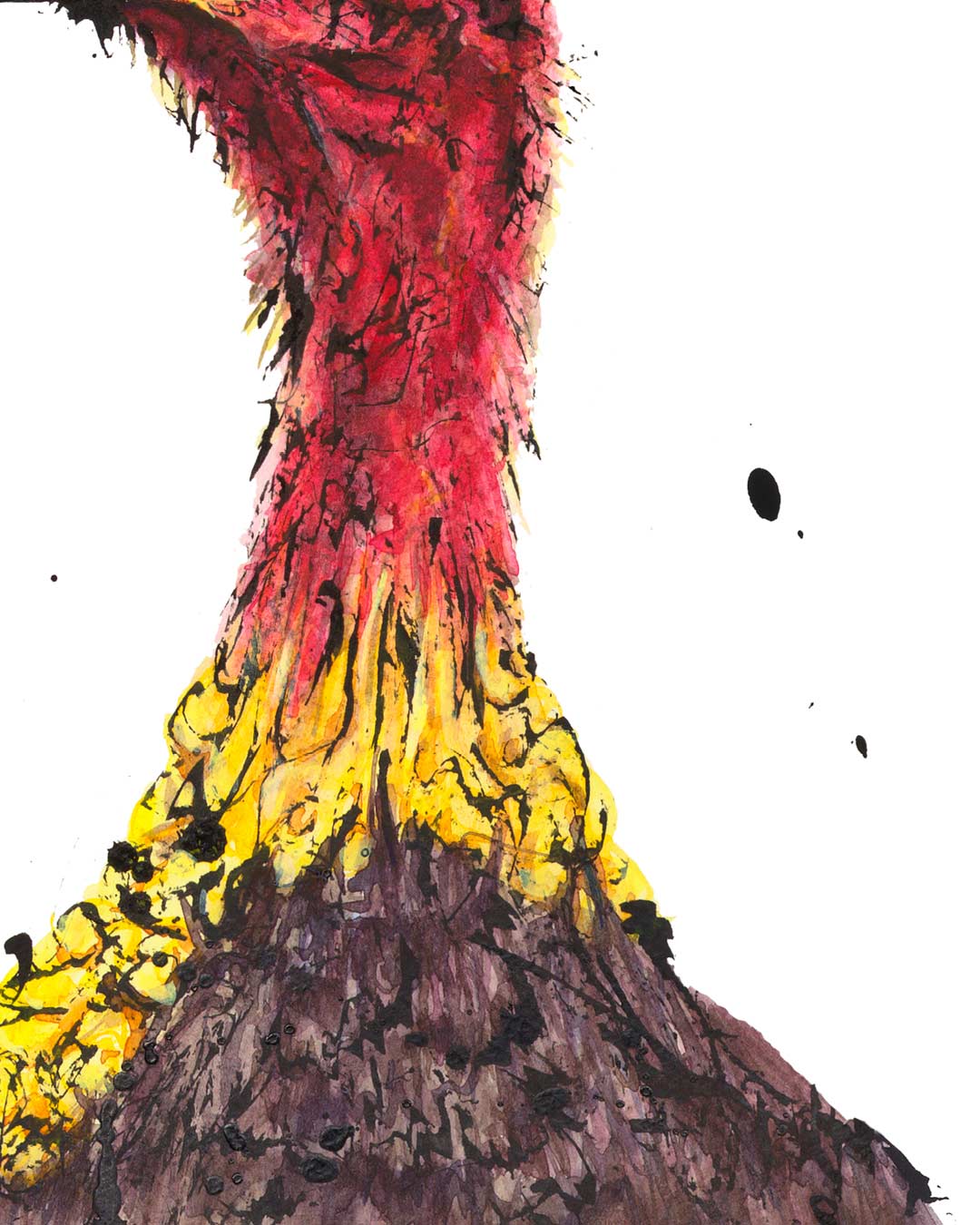Shannon Dwyer Artist
Fine Art Giclée Print
Couldn't load pickup availability
Shannon is a big fan of the Brush Turkey because, ultimately, any Aussie bird with an extreme level of ‘quirk’ or ‘weird’ is on her ‘must-paint’ list! Armed with a constant look of shock and disdain, coupled with garish colouring and a wrinkled, wobbly sack of ‘neck-meat’, Shannon happily sank her artistic teeth into this fantabulous ‘Bushie!’! So. Much. Character!
About this bird:
The Australian Brush-turkey (also know as ‘scrub’ or ‘Bush’ Turkey) is not easily confused with any other Australian bird. At 70 cm in length, and weighing around 2.3kg, it is the largest of Australia’s three megapodes (mound-building birds). Found throughout eastern Australia, it inhabits wooded habitats, but can also be found in drier scrubs and has adapted well to urban environments. Usually found alone foraging on the ground, it may also congregate in loose groups at sources of food or to roost in trees at night. Brush-turkeys feed on insects, seeds and fallen fruits which are exposed by raking the leaf litter on the ground. In urban areas, it has been known to damage gardens by raking the ground looking for food. As with other megapodes, Australian Brush-turkeys do not incubate their eggs by sitting on them. Instead, they use their large feet to rake leaf litter to form a large nesting mound of rotting vegetation into which the females lay their eggs. The heat generated by the rotting vegetation warms the eggs. The internal temperature is regulated by the male by inserting his bill into the mound to check heat levels, to then scrape leaf litter on or off based on the temperature. Once incubated, the chicks burrow out of the mound, to fend for themselves. Threats to the Brush-turkey are the loss of natural habitat due to land clearing, and the constant predation of introduced species, such as: pigs, foxes and, most especially, cats. Interestingly, in the 1930s it was actually humans who nearly ATE it into extinction! Thankfully in the 1970s it became a protected species so, with the introduction of urban greening and rejuvenation, along with the turkey’s ability to adapt to big-city living, its re-emergence and subsequent takeover of cities is a direct result of how conservation efforts (even in major cities), is so important! Conservation Status: Least Concern.
Share
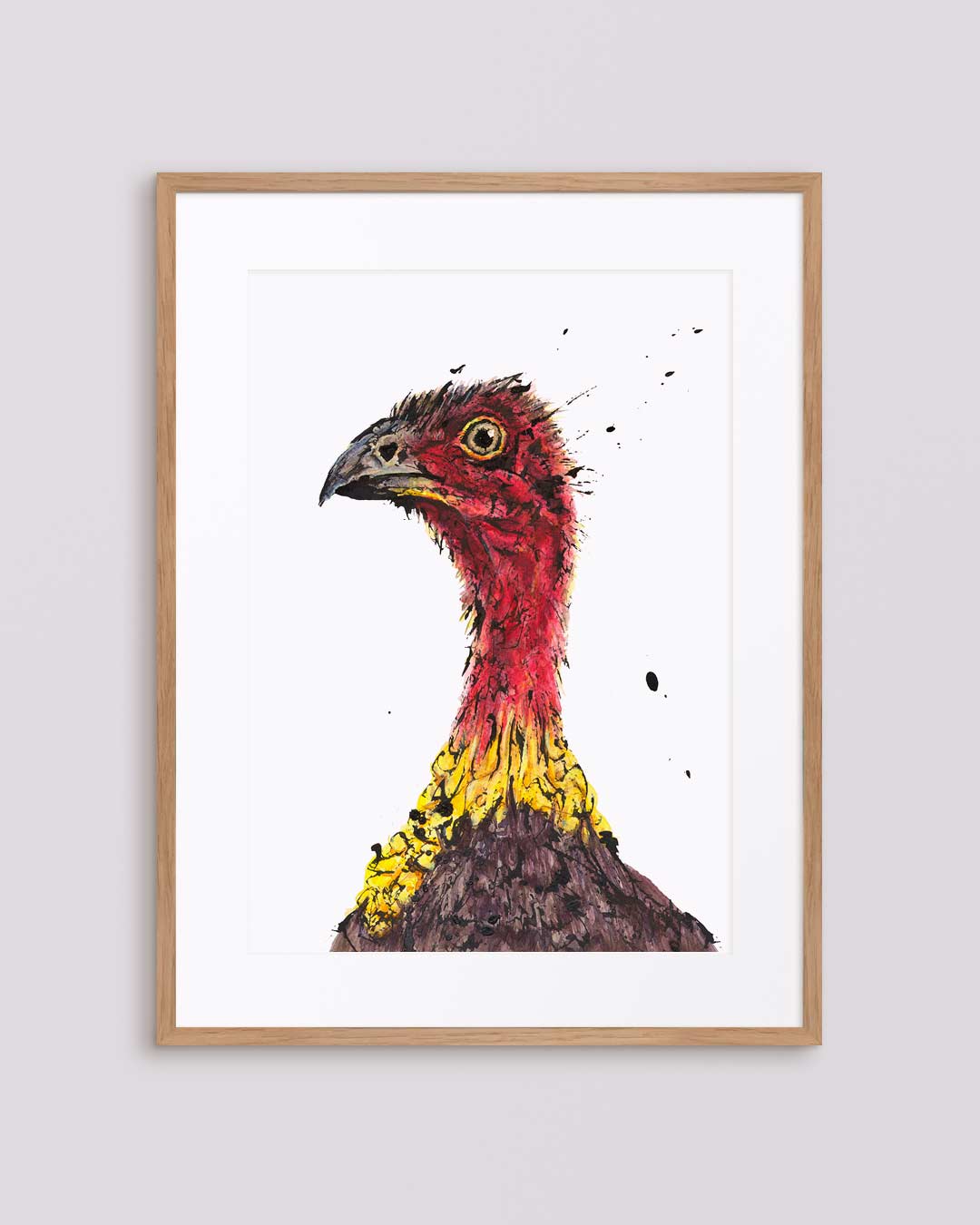

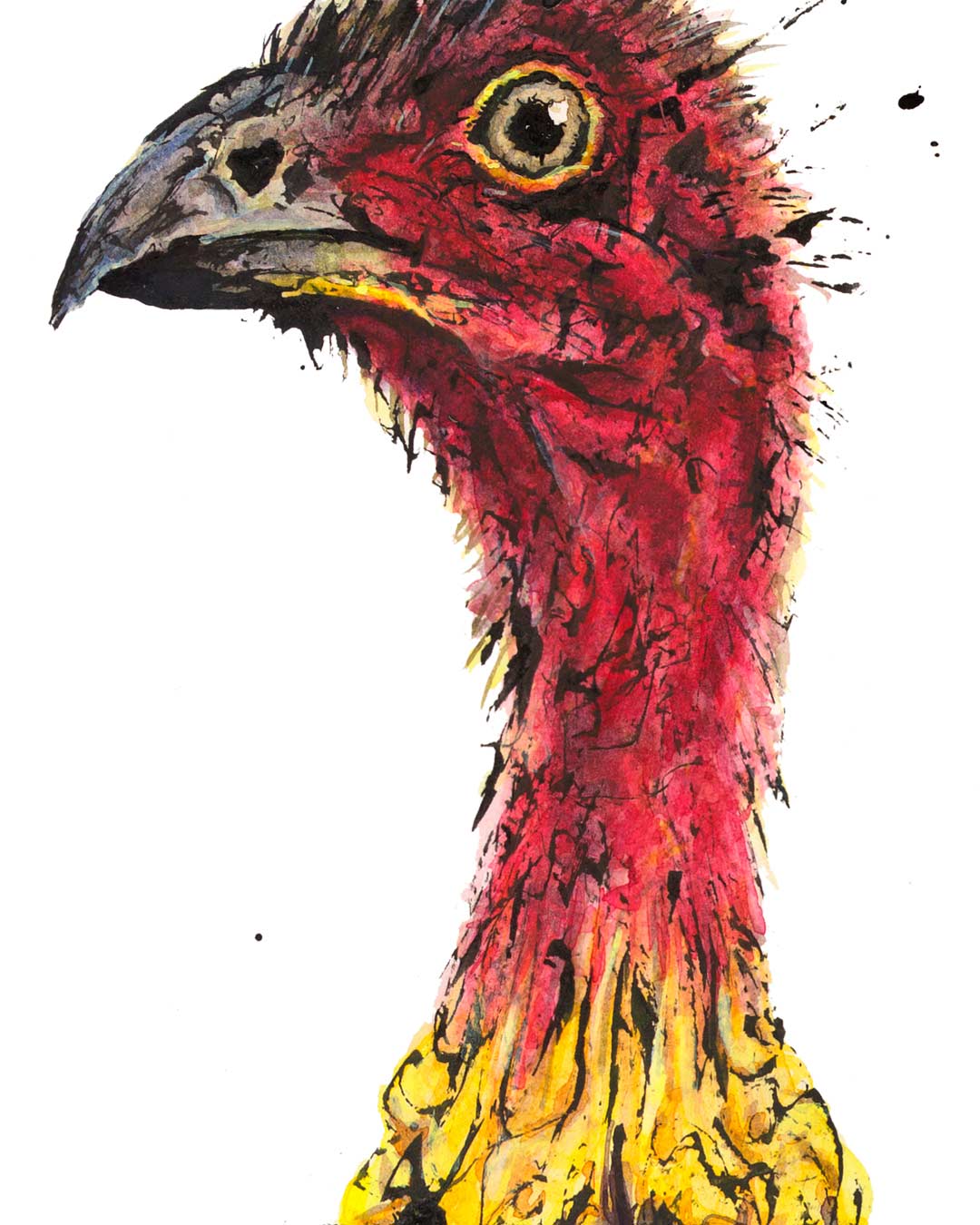
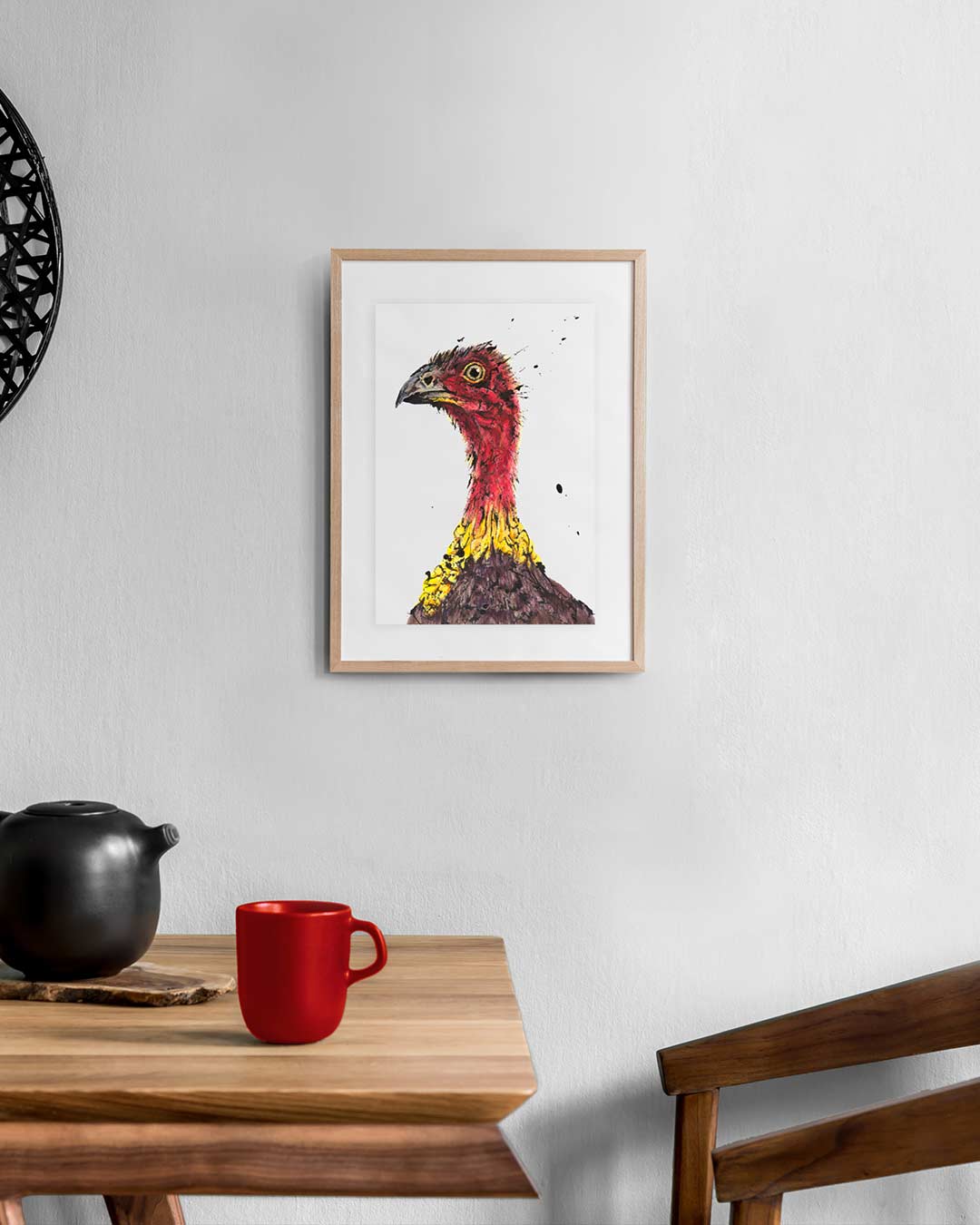
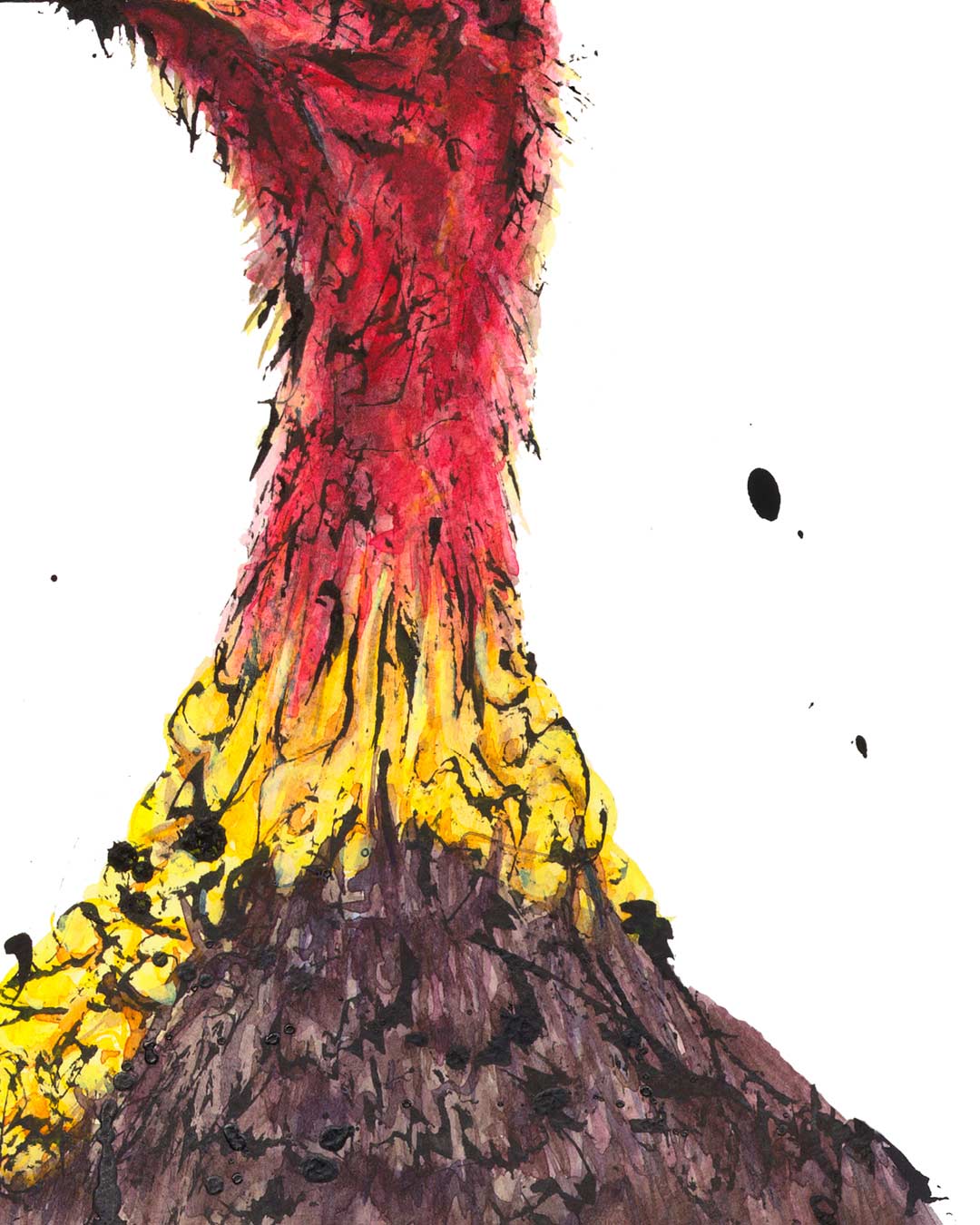

Each fine art giclée print is hand-signed by Shannon.
All Prints are made from an original painting that has been professionally ‘captured’ to ensure all of its finer details remain - including the beautifully subtle texture in the paper.
Each fine art giclée print is hand-signed by Shannon.
All Prints are made from an original painting that has been professionally ‘captured’ to ensure all of its finer details remain - including the beautifully subtle texture in the paper.

Paper: Premium-grade bright white 315gsm acid-free paper, with a beautifully subtle textured finish
A5 Fine Art Print size comes mounted on A4 matboard, ready for framing.
Custom sizing available on request.
Inks: Printed with archival pigment inks.
Postage: Prints may be posted flat or rolled in acid-free tissue paper, within a postage tube.
What is a Giclée?
Giclée is a printing process using high-quality digital files, archival-grade pigments and acid free media resulting in a fade-free image which achieves a seemingly “dot-less” imaging technology (which varies from traditional fine art printing which typically relies on screen pattern dots to reproduce full-range colour halftones). The Giclée process enables reproduction on virtually the same media as the original artwork.
Paper: Premium-grade bright white 315gsm acid-free paper, with a beautifully subtle textured finish
A5 Fine Art Print size comes mounted on A4 matboard, ready for framing.
Custom sizing available on request.
Inks: Printed with archival pigment inks.
Postage: Prints may be posted flat or rolled in acid-free tissue paper, within a postage tube.
What is a Giclée?
Giclée is a printing process using high-quality digital files, archival-grade pigments and acid free media resulting in a fade-free image which achieves a seemingly “dot-less” imaging technology (which varies from traditional fine art printing which typically relies on screen pattern dots to reproduce full-range colour halftones). The Giclée process enables reproduction on virtually the same media as the original artwork.
